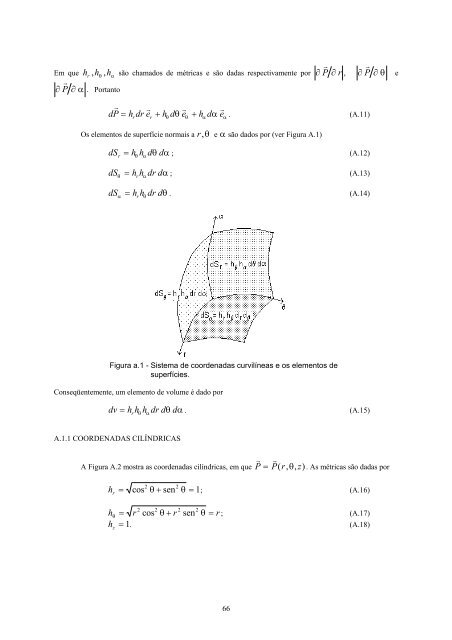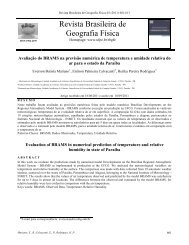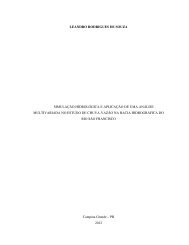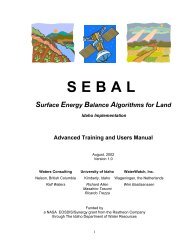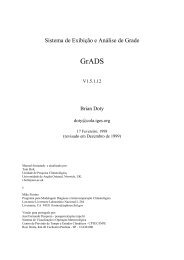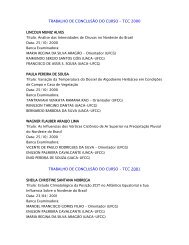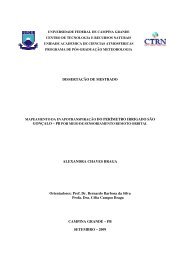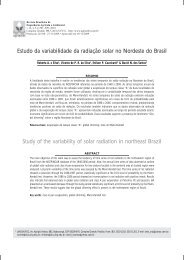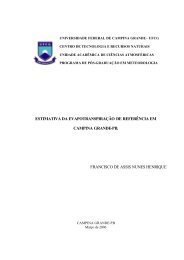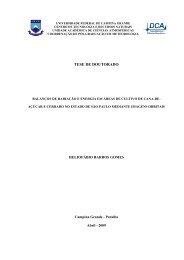Dinâmica de Fluidos - Dca.ufcg.edu.br
Dinâmica de Fluidos - Dca.ufcg.edu.br
Dinâmica de Fluidos - Dca.ufcg.edu.br
You also want an ePaper? Increase the reach of your titles
YUMPU automatically turns print PDFs into web optimized ePapers that Google loves.
Em que h , h ,h r θ αsão chamados <strong>de</strong> métricas e são dadas respectivamente por ∂ P ∂ r , ∂ P ∂ θ e∂ P ∂ α . Portanto dP = h dr e + h dθe + h dαe . (A.11)rrθ θ αOs elementos <strong>de</strong> superfície normais a r ,θ e α são dados por (ver Figura A.1)αdS = rhθh αdθdα; (A.12)dS = h h dr d ; (A.13)θ r ααdS = h h dr d . (A.14)α r θθFigura a.1 - Sistema <strong>de</strong> coor<strong>de</strong>nadas curvilíneas e os elementos <strong>de</strong>superfícies.Conseqüentemente, um elemento <strong>de</strong> volume é dado pordv = h hθh αdr dθdα. (A.15)rA.1.1 COORDENADAS CILÍNDRICASA Figura A.2 mostra as coor<strong>de</strong>nadas cilíndricas, em que P = P( r, θ, z). As métricas são dadas porh r cos 2 + 2θ θ =1; (A.16)2 2 2 2hθ = r cos θ+r sen θ = r; (A.17)hz= 1. (A.18)66


